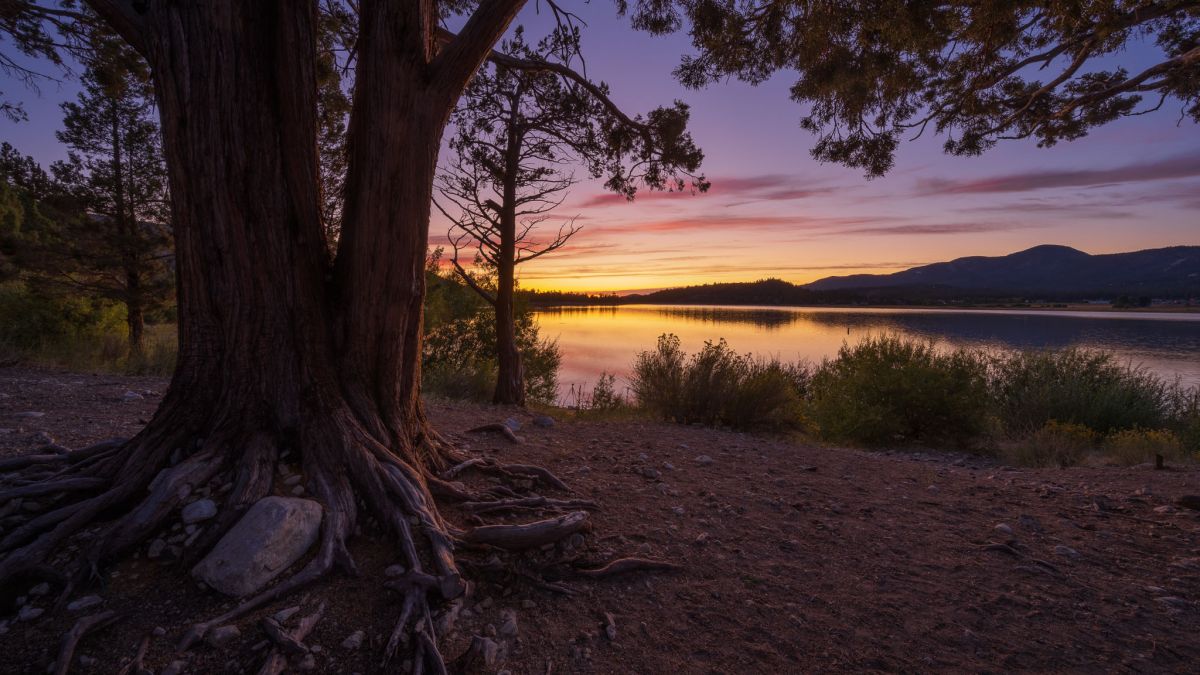
The Nikon Z 14-30mm f/4 S is one of the most exciting wide-angle lenses in a very long time, and yet, it is almost the opposite of an “exotic unicorn”. In other words, it’s not a fast-aperture, enormous, heavy chunk of glass. So, why is such a modest lens so exciting?
Because it achieves the impossible for landscape photographers: It zooms out to 14mm and is impressively sharp, yet it still accepts standard 82mm filters and collapses to a truly tiny, portable size.
This makes it unlike any other full-frame ultra-wide zoom (mirrorless or DSLR) that reaches 14mm. All other lenses are relatively massive and/or have bulbous front elements with fixed hoods.
Of course, the other ultra-wide zooms in that “class of 14-24mm” are all f/2.8, which is great for nightscape or astro-landscape photography. Traditional landscape photography, on the other hand, doesn’t really require f/2.8. So, why lug around a massive, heavy ultra-wide zoom lens if you’re going to capture all of your landscape images at f/11?

That is where the Nikkor Z 14-30mm f/4 S comes in. It’s tiny! It is almost as small as a “kit lens” such as a 18-55mm or a 24-85mm. It costs just $1300, which is about as much as the exotic third-party lenses that all weigh more than twice as much!
The only question is, can it deliver the goods? Landscape photographers are some of the most obsessed pixel-peepers around, with extremely high standards for sharpness and image quality. And, to be honest, at first glance the Nikon 14-30mm looks like it just won’t be very impressive.
In this review, we’ll find out just how wrong your assumptions would be…
Nikon Z 14-30mm f/4 S | Specifications

Focal Lenght & Angle Of View: 14-30mm, 114º-72º
Lens Mount(s): Nikon Z (full-frame mirrorless)
Aperture & Range: f/4 – f/22
Optical Construction: 14 elements in 12 groups, 4 aspherical, 4 ED elements, Nano Crystal, Fluorine, Super Integrated Crystal coatings
Stabilization: No (in-camera on Nikon Z6 & Nikon Z7)
Autofocus: Yes, silent stepper motor
Manual Focus: Electronically controlled focus ring
Mechanical Construction: Collapsible/retracting design, mostly metal, weather-sealed
Magnification & Focus Distance: 11.02in (28cm), 0.16x magnification
Size: 3.5×3.35 in (89×85 mm)
Weight: 1.07 lb (485 g)
Filter Threads & Hood: 82mm filter threads, accessory hood included
Price: $1295 (Adorama, Amazon, B&H)
Reviewed on: Nikon Z7 ($2200-$3043, depending on options)
Accessories used: Slik Tripods, PolarPro Quartzline filters, PolarPro Summit Landscape Filter Kit
[Related Reading: What Is The Best Camera For Landscape Photography – Nikon, Canon, Sony, Fuji, Pentax, Olympus?]
Nikon Z 14-30mm f/4 S Review | Pros
In most of our gear reviews, we first talk about “who should buy it”. However, for this review, we’re going to start by showing you proof that this lens is actually very impressive.
The Nikon 14-30mm has benefits for various types of photography, compared to the competition, and these benefits are already very clear, except for one thing: how does the lens actually perform? So, on that note, let’s talk about image quality and other things…
PRO #1. – Image Quality

There’s a lot more to image quality than just sharpness. Aside from resolving power in the center or corners of the image, there is also: the lens’ color, contrast, bokeh, vignetting, distortion, flare, sunstars, color fringing, aberrations, astigmatisms, field curvature, and close-up sharpness.
That’s a lot of different ways we can measure a lens’ performance! If you’d like a short-and-sweet version, here it is: The image quality is very impressive overall from the 14-30mm, and considering what the lens is likely to be used for, you could argue that it is truly phenomenal considering its portable size and its affordable price tag. It’s not just sharp, but in every other respect it is, well, respectable.
Sharpness


For those who want a more in-depth analysis, here it is: Wide-open, the lens is extremely sharp in the dead-center, even on the 45-megapixel Z7 without an AA filter. This impressive sharpness wide-open extends to well past the rule-of-thirds box, so all of your candid, wide-open subjects will always be sharp if you focus on them.
At the edges and corners, you get decent sharpness wide open, and impressive sharpness when stopped down. That’s as much as an adventurous landscape photographer could ask for, on a 45-megapixel sensor!
Sharpness Test Samples
These are all 100% crop images, with a little bit of fine-radius sharpening applied. The Nikon 14-30mm f/4 samples are captured with a Nikon Z7, and the Sigma 14-24mm f/4.8 samples are captured on a Sony A7R III. All images were captured from a tripod, with electronic 1st-curtain shutter and 2-sec timer.

Analysis: From the dead-center to the near-corner, the Nikon is incredibly sharp, only slightly less sharp than the Sigma 14-24mm f/2.8, one of the best 14-XXmm lenses ever made. In the extreme corners, the Nikon never gets truly “perfect”, but it does get acceptably sharp by f/8.
Colors & Contrast

Vibrant, popping images are to be expected from Nikkor lenses and cameras, and this lens does not disappoint. Some photographers say that poor colors and contrast are not a big deal now with raw software makes it so easy to “fix” everything. Aside from the obvious fact that videos can’t be color-corrected as easily as a raw .NEF file, the reality is that it’s nice to have a good quality lens that delivers clear tones and doesn’t have a color cast or anything.
Bokeh
If you’re wondering about the bokeh of a 14-30mm f/4 lens, then you might be considering the wrong lens. If you do any type of photography in which bokeh is important, then even at 30mm and f/4, you’re not going to get that much background blur unless you’re getting pretty close to your subjects.
With that said, literally every Z-mount lens that Nikon has made so far has offered beautifully smooth bokeh. It likely has something to do with the newfound optical possibilities compared to the “old” F-mount; Nikon’s mount is now the widest and one of the most shallow of any mirrorless mounts, and that definitely means that the bokeh from these lenses is super-smooth.
Still, if I were doing portrait photography or candids, and wanted to really “kill” a background, I’d definitely recommend getting a wide-angle prime to compliment this “slow” f/4 zoom. Thankfully, Nikon already makes a 20mm f/1.8 Z/S, a 24mm f/1.8 Z/S, and a 35mm f/1.8 Z/S.
Check out our Nikon Z 35mm f/1.8 S lens review here; it’s our best recommendation to complement the Nikon Z 14-30mm f/4 S.
Vignetting & Distortion

As a very compact, portable optic, you might expect to see serious compromises with distortion and vignetting. The good news is, the Nikon Z 14-30mm f/4 S is a modern mirrorless optic, with built-in options for nearly flawless correction profiles for both distortion and vignetting. If you turn these options on in-camera, you’ll enjoy virtually zero distortion, and relatively low vignetting.
The bad news is, under-the-hood raw vignetting correction doesn’t seem to be as perfectly consistent as it could be. For example, when shooting timelapse you may notice some flickering in the corners of the image, whether shooting wide-open or stopped-down.

Also, for those who create panoramas a lot, even with 50% overlap you might still see some faint vignetting “stripes” in that panorama, if you heavily edit your smooth-toned blue skies.
Lastly, you may also notice some faint color vignetting at any aperture, too; the center of the image can appear slightly warmer while the corners appear slightly cooler, especially when heavily editing images of mostly grey or white subjects.
Sunstars & Flare

With a lot of the latest optical coatings at its disposal, the 14-30mm offers almost none of those annoying “flare dots”, while still giving that beautiful golden haze if you intentionally want to introduce flare into your scene.
Sunstars, on the other hand, are pretty average. As yet another modern optical design with rounded aperture blades that are optimized for pleasing bokeh and smooth focus transitions, you won’t get those needle-point sunstar spikes that you would have got from an old manual focus Nikkor AI-S lens.
This seems a bit of a shame, since as an f/4 wide-angle lens, you’d think that optimal bokeh wouldn’t be as much of a priority; this lens is likely going to be used by a lot of cityscape and other types of photographers who are going to be stopping down to f/11 or f/16 and hoping for some gorgeous sunstars.
With that said, the sunstars on the 14-30mm are still slightly more pointed than the other lenses with an even number of rounded aperture blades, such as most Rokinons with their 6-point, flower-petal-looking sunstars, and Sigma’s Art lenses with their similarly flower-petal-shaped sunstars.
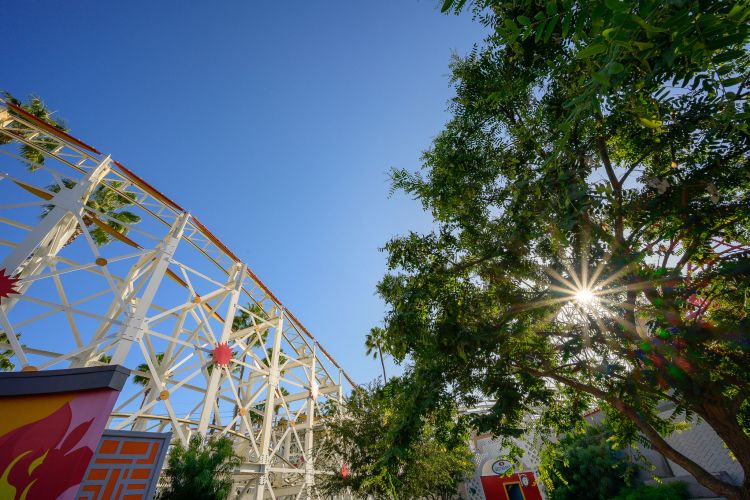
NOTE: In some special circumstances of flare, we did notice a very odd RGB color flare pattern. It’s something we’ve seen before on old CCD sensors, and/or older lenses with more square-ish apertures. This only happened once, and we didn’t have other lenses to test so it may be a camera body issue and not a lens issue, who knows!
Color Fringing & Aberration, Coma & Astigmatism, Field Curvature

As an f/4 lens, on the one hand, it probably won’t be a top contender for best astro-landscape photography lens, a category where things like coma/astigmatism and “CA” (Chromatic Aberration) are critical. However, on the other hand, as an f/4 lens, it’s all the more likely to be used wide-open by anyone who does shoot in low light.
Thankfully, we can report that as a cutting-edge optic, this Nikkor delivers the good even wide-open at f/4. Its corners, although they are of course vignetted and less sharp than dead-center, are still impressive in terms of avoiding too much color fringing, coma/astigmatism, or field curvature.
Macro & Close-Up Photography
As a wide-angle zoom, most people don’t think about using a lens for macro. Its maximum magnification of 0.16x is not that exciting, even among other wide-angle lenses. However, at such wide focal lengths, it can still be a very interesting, exciting perspective. If the lens is sharp at its closest focusing distance, that is. Luckily, the 14-30mm f/4 is just as sharp at its closest focus distance of 11 inches (28 cm).
PRO #2. – 82mm Filter Threads

For the type of photography that the 14-30mm is likely going to be used to, this deserves its own entire “Pro” category. Simply put, 82mm filters on a 14mm is a virtually non-existent feature on any lens, on any mount, period.
If you never use filters, that’s OK, and we’ll keep this short and sweet: For landscape photography, for example, being able to easily slap on a simple, threaded circular ND or Polarizer filter is a wonderful thing. Compared to the enormous 150mm filter systems that clamp onto fixed-hood ultra-wide lenses, it’s wonderful to be able to fit such an accessory into a small side pouch of your lightweight hiking backpack. (Or, for your casual day at a theme park with your family… Can anyone recognize this waterfall?)
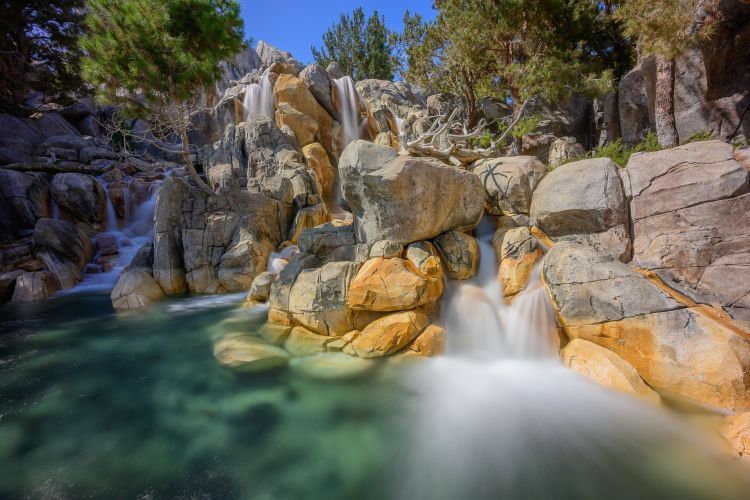
If you do use square filter systems, of course, you still don’t need to go for those giant 150mm clamp-on systems, you can use a 105mm, thread-in system like the PolarPro Summit filter kit.
PRO #3. – Design & Durability

One of the misconceptions about small, collapsible lenses is that they’re built cheaply for beginners. This was sort of true, for actual entry-level lenses, but Nikon has made it clear with their new Z-mount that portable, even collapsible lenses, can still be flagship quality.
Metal & Plastic Construction, Weather Sealing
Indeed, the 14-30mm f/4 has a lot of metal in its construction, and it’s also fully weather-sealed. So if you’re hard on your gear in general, or if you frequently find yourself out in nasty weather, you can consider this lens to be roughly on par with any of the flagship f/2.8 zooms. In fact, in really nasty weather, I’d rather have this lens with one of those water-resistant UV filters on it, than any of the other ultra-wide lenses that have an unprotected, bulbous front element.
PRO #3. – Autofocus Performance
Wide-angle lenses don’t need to be that good at autofocus, however, they can still drop the ball with regard to precision and reliability if they have a tendency to front/back focus, or to just not track subjects quickly enough.
Since the 14-30mm f/4 has relatively little glass to push back and forth, the virtually silent autofocus is quite reliable. Also, it’s worth noting for those who shoot video, there isn’t much focus breathing, either. (To be precise, there’s virtually zero at 14mm, and only a tiny bit at 30mm.)
PRO #4. – Value
To see the true value of the Nikon Z 14-30mm f/4 S, we have to remember that it is a flagship-quality, name-brand lens. It costs $1300, despite its diminutive size and modest aperture, because it is not at all a “basic kit lens”. Solidly built, with flagship-grade construction and weather-sealing, it finishes earning its value by delivering images that are worthy of professional work.
As such, it is indeed an incredible value. For the folks who, for whatever reason, refuse to shop third-party, this is a unicorn of a lens in terms of price versus performance/features. Having said that, we can’t ignore the third-party options, because a lot of them have a lot to offer. Thankfully, they can all be summed up with just two statements: Almost all of them do have f/2.8 to offer, for the same price or even for hundreds less in some cases. We’ll mention a few choices later.
However, if you want an affordable lens that is also lightweight, your options become a little bit more limited. You could use an adapter with the Sony E/FE Tamron 17-28mm f/2.8, if you want an autofocus lens, and don’t mind giving up 14mm for “just” 17mm.
Besides that, for value and portability, you could go with manual focus third-party options like Laowa/Venus or Rokinon/Samyang. Personally though, I’d rather have the incredibly dependable overall quality of a Nikkor whenever I can afford it, and for $1300 the Nikon 14-30mm is definitely the absolute champion of value in the full-frame mirrorless realm for me.
Nikon Z 14-30mm f/4 S Review | Cons
It’s sharp, it’s portable, it’s built very solidly, and it’s impressively affordable compared to most of its flagship-grade competition. What’s not to like? Very little, aside from the obvious fact that it is, of course, aimed at those who are looking to make a slight compromise on aperture brightness and extreme corner image quality.
CON #1. – It’s Not f/2.8
If you’re a nightscape/astro-landscape photographer, or if you’re a low-light photojournalist, then you may still need f/2.8 for your low-light work. Nevermind that Nikon’s Z-series full-frame cameras all have built-in stabilization, and impressive high ISO image quality, allowing you to shoot at slower shutter speeds than ever before.
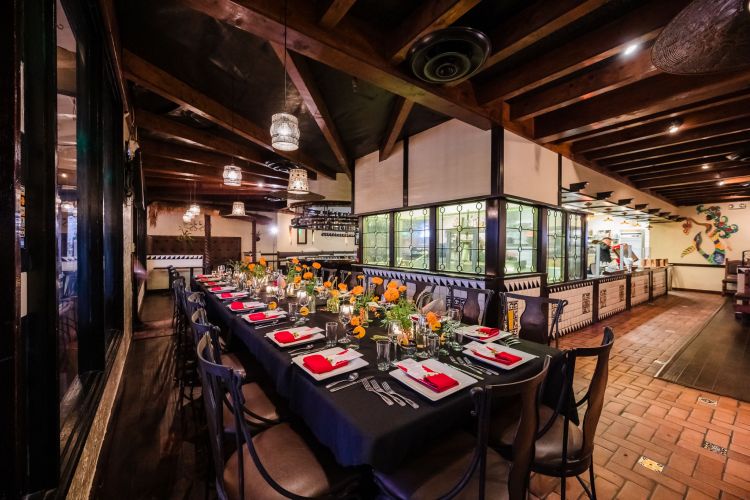
Okay, kidding aside, sometimes you just need f/2.8. Whether for fast action in low light, or photographing the stars at longer shutter speeds from a tripod, you probably already know if this is a deal-breaker or not. We’ll save the debate between whether or not you actually “need” f/2.8 for another day.
CON #2. – Extreme Corner Image Quality

While the image quality of the Nikon Z 14-30mm f/4 S is very impressive overall, (and, make no mistake, most photographers should just buy it, if they would rather have a portable ultra-wide zoom) …it should be noted that yes, the extreme corners of the 14-30mm are a little less impressive than truly exotic best 14mm options out there.
If you obsess over perfect corners, then a Sigma 14-24mm f/2.8 DN Art (on an adapter for the Sony E-mount) would give truly incredible corners throughout its entire zoom range, at any aperture. Or, for even less money, a Rokinon 14mm f/2.4 SP (or Samyang 14mm f/2.4 XP) would give some of the best overall image quality of any 14mm lens, ever.
Long story short: You probably shouldn’t care about any shortcomings that the Nikon Z 14-30mm f/4 S has. If you’re getting a Nikon Z6 or a Nikon Z7 as a landscape photographer who wants a more portable setup than, say, a Nikon D850 and the latest Sigma 14-24mm f/2.8 DG HSM Art or Tamron 15-30mm f/2.8 VC, …then just buy this lens and go take pictures!!!
CON #3. – Manual Focus Markings
This isn’t going to be much of a concern at all for most types of photographers, because autofocus is used almost all the time, and even when manual focus is used, all you need is good precision, which the 14-30mm delivers.
However, some landscape photographers do prefer manual focus lenses, or autofocus lenses that still show focus distance and even hyperfocal markings. As with most modern mirrorless lenses, though, the Nikon 14-30mm has no markings, and an electronically-controlled manual focus ring. It’s very precise and decently smooth, but it’s nothing like the focus precision of a fully manual lens like the Rokinon/Samyang 14mm f/2.4 SP/XP.
Nikon Z 14-30mm f/4 S Review | Compared To The Competition

Okay, so, what else is out there? A whole lot of fantastic zooms, and a handful of great primes. Some that are f/4, others that are f/2.8, and even a few that are even faster than f/2.8! Some only get to 15mm, others hit 14mm, and a few go even wider to 11mm or 12mm.
Almost all of the competition, however, is relatively massive compared to the Nikon 14-30mm. The size/weight difference is by far the most dramatic difference. So, how do you decide which lens is right for you? If you want the most portable zoom around, get this one. Other than that, there are a lot of criteria, so let’s break it down:
Nikkor Z-Mount and F-Mount Lenses
If you’re only willing to consider Nikon options, then you have two categories of choices: native Z-mount lenses, or DSLR F-mount Nikkors on the FTZ adapter. In terms of native Z-mount lenses, your only alternative is the new Nikon Z 20mm f/1.8 S, which was just released and indeed a very good alternative if you want a similarly small and portable lens, but would rather have f/1.8 at 20mm than 14mm and f/4.
Alternately, there’s the Nikon Z 14-24mm f/2.8 S, which is yet to come in 2020. However, if you need 14mm and f/2.8 and don’t mind a much bigger, more expensive lens, then you should wait and see how that flagship f/2.8 zoom performs! It will likely be incredible.
With the FTZ adapter, you could also use your Nikon 14-24mm f/2.8 G, of course, but that’ll be one heck of a front-heavy setup, especially if you’re putting your tripod plate on your Z6/Z7, and not the FTZ adapter.
Third-Party Full-Frame Z-Mount Lenses
If you’re willing to consider third-party lenses, then you have a few more options, although not many are native to the Z-mount yet.
- Laowa / Venus made a Z-mount 15mm f/2, 10-18mm f/4.5-5.6, and (a DSLR-converted) 12mm f/2.8. All of these lenses are made of metal and are very compact, however, none of them are as impressive optically as the Nikon 14-30mm.
- Rokinon’s classic (DSLR) UMC 14mm f/2.8 has also been converted to the Z-mount, too, and it’s an optically impressive lens, if you stop down for landscape work, and if you use the distortion correction profile.
Third-Party & Adapted Mirrorless & DSLR Lenses
For this widest variety of options, you’ll need the Nikon FTZ adapter for F-mount DSLR lenses, or the TechArt adapter for Sony E-mount to Nikon Z-mount:
- Sigma 14-24mm f/2.8 DN Art (Sony E Mirrorless) – An incredible lens, very sharp, and lighter than the DSLR version!
- Tamron 17-28mm f/2.8 (Sony E Mirrorless) – Also incredible, with slightly less zoom range, but very lightweight and compact!
- Sigma 14-24mm f/2.8 HSM Art (Nikon F-mount) – Very sharp, but extremely large, heavy, and will be seriously front-heavy on your Nikon Z-mount camera!
- Tamron 15-30mm f/2.8 VC (Nikon F-mount) – Both the original and the G2 versions of this lens are sharp and generally amazing, but again, as f/2.8 DSLR zooms they are going to be very front-heavy.
- Sigma 12-24mm f/4 HSM Art (Nikon F-mount) – Here’s another giant, heavy lenses that is also incredibly sharp, this f/4 zoom goes to 12mm.
- Sony FE 12-24mm f/4 G (Sony E-mount) – This mirrorless lens goes to 12mm f/4, but is a whole pound lighter (and a bit smaller) than the Sigma. (Note, by the way, that we have not yet reviewed the TechArt adapter, so we can’t speak to how these non-native mirrorless lenses will perform on Nikon’s Z-mount. Try them at your own risk!)
- Sigma 14mm f/1.8 HSM Art (Nikon F-mount) – If you want the brightest, sharpest 14mm lens around, this is it. It’s giant, it’s heavy, …and to be quite honest, it’s exactly the type of prime lens that I’m looking forward to not having to lug around anymore, as a nightscape photographer and especially as a traditional landscape photographer.
- Rokinon/Samyang 14mm f/2.4 SP/XP (Nikon F-mount) – Another one of the sharpest 14mm lenses ever, however, this one is a bit smaller and lighter than most of the others, and has a wonderful manual focus system that nightscape photographers will love.
The list could go on forever, but here’s the bottom line: There are a lot of options, and most of them are actually priced similarly to the Nikon 14-30mm, or even more affordably. However, they’re all either incredibly front-heavy, or their image quality isn’t as good as the Nikon.
Nikon Z 14-30mm f/4 S | Who Should Buy It?
Landscape Photographers

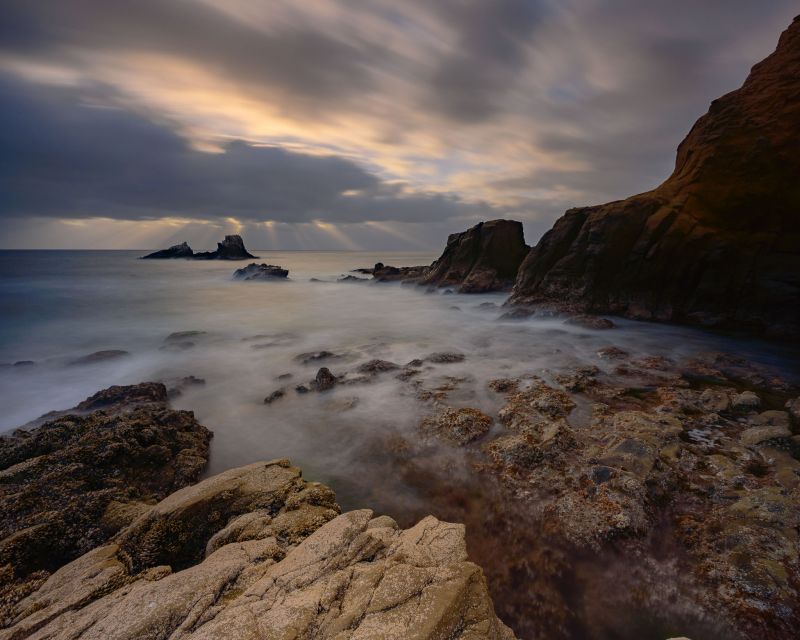
Here’s the bottom line for you landscape photographers out there: right now, the Nikon Z 14-30mm f/4 S is one of the main selling points of the Nikon Z mirrorless system as a whole for you, if you need to travel light when photographing your outdoor adventures. (Click here to read our article with all five reasons why landscape photographers should put Nikon at the top of their shopping list!)
Of course, to some landscape photographers, weight and size (and price) may not be a concern. Maybe you don’t ever go very far from a parking lot trailhead, etc. You’re probably better off using the FTZ adapter with whichever ultra-wide zoom you currently have, and waiting to see how amazing the Nikon Z 14-24mm f/2.8 S turns out, as long as you can afford the price tag that will likely be ~$1000 higher than the 14-30mm.
Travel & Adventure Photographers

Whether you shoot mostly from a tripod or hand-held, if you shoot travel cityscapes, landmarks, or anything else, you may not be climbing mountains but you’re probably going to have your gear on your back all day long.
Pair the 14-30mm f/4 with the Nikon Z 24-200mm f/4-6.3 S, and you have the perfect full-frame travel kit. (Although, to be fair, you should probably get the 24-200mm first,for travel, and see if you ever want to go wider than 24mm)
Nightscape Photographers
Unfortunately, if you do night photography, then f/4 can seem like a real no-go. But, if you already have a great nightscape lens such as a 24mm or 20mm prime that hits f/1.4 or f/1.8, then maybe you barely ever shoot at 14mm. If this is you, then the 14-30mm f/4 might be a good compromise.
The truth is, because of how wide 14mm is, you can get away with a little more in terms of longer shutter speeds, and you’ll be just fine if you only use this lens when there is some moonlight shining on your nightscape scene, and/or if you’re willing to use a slightly longer shutter speed than your “500/NPF rule” allows.
Portrait & Wedding Photographers

You probably don’t go wider than ~24mm very often as a portrait or wedding photographer, and for that reason it’s a good idea to A, not spend too much money on such a lens, and B, not take up too much space in your camera bag.
Whether you already have a 24mm prime or a 24-70mm f/2.8, you probably don’t really need a 20mm prime. However, do you really need a lens that goes to 14mm, as much as you could use f/2.8? You might like the Tamron 17-28mm f/2.8 instead, because it’s also pretty affordable and very small. Personally, though, especially as a wedding photographer I try to avoid adapters at all cost. So, again, I’d rather have the 14-30mm f/4.
However, if your widest lens is, say, a 35mm prime, then for portraits or weddings it might be better to just get one of the amazing f/1.8 primes; both the 24mm Z/S and 20mm Z/S are great choices for their bokeh and low-light performance.
Nikon Z 14-30mm f/4 S Review Review | Conclusion

Should we re-state the same thing we’ve already said at least a half-dozen times? Sure, why not: If you don’t need f/2.8, and if you do like lenses that are portable but still very sharp and professionally durable, then this is a dream lens with no equal. Go buy it without hesitation, and start planning your next landscape photography adventure!

If, however, you have only ever considered f/2.8 lenses, then you should ask yourself why, because Nikon’s Z-mount is really shaking things up in terms of our preconceived stereotypes about certain F-numbers. Their f/1.8 S-class primes have all been flagship-grade, superior to most previous f/1.4 in almost every way except their brightness.
So, there you have it. In keeping with Nikon’s powerful value proposition overall, this lens is delivering an incredible option that is virtually unmatched by any competition of any brand. If you want what it offers, then don’t hesitate to get it…
Nikon Z 14-30mm f/4 S | Price & Availability
Adorama ($1297) | Amazon ($1297) | B&H ($1297)
9.0 Score
Pros
- Unprecedented portability for a high-quality ultra-wide zoom
- 82mm filter thread compatibility
- Flagship-grade durable build quality
- Sharpness & Image Quality
Cons
- It's f/4, not f/2.8
- Extreme corner image quality is impressive but not perfect
- Fully electronic focusing
Final Verdict
Considering the performance and the price, it's pretty easy to decide whether or not to get this lens. It is truly the only one of its kind, so if you need what it offers, you absolutely will not regret your purchase!
Matthew Saville
Follow his wilderness nightscape adventures on Instagram: instagram.com/astrolandscapes












Get Connected!